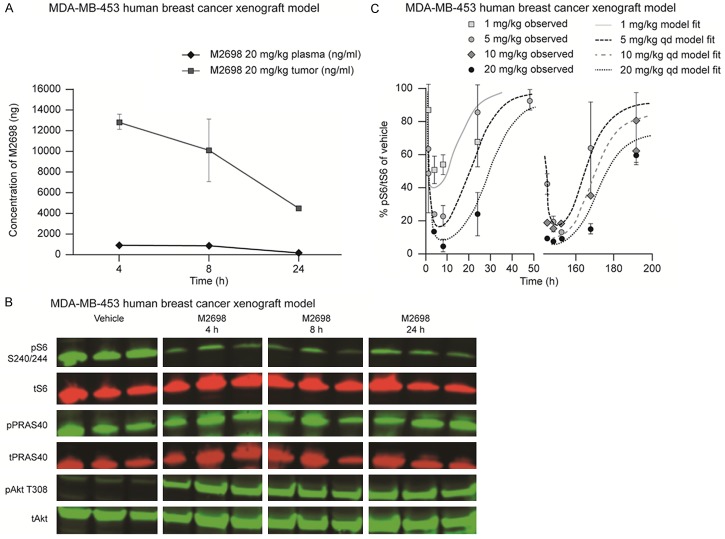Figure 2.
Distribution of M2698 in plasma and tumors, and targeted inhibition of p70S6K. A. Mice bearing subcutaneous MDA-MB-453 human xenograft tumors (n=3 per time point) were treated with vehicle or 20 mg/kg M2698 qd po for 4 days and plasma and tumors were harvested at 4, 8 and 24 h after the final administration. Plasma and tumor concentrations of M2698 were assessed by LC-MS/MS at each time point. B. Mice treatment and sample collection was the same as described for A. Phosphorylated and total S6 (S240/244), PRAS40, and Akt (T308) were assessed from tumor protein lysates by western blot analysis at each time point. C. Mice bearing MDA-MB-453 human breast cancer xenograft tumors (n=4 per time point) were treated with vehicle or M2698 1, 5, 10, or 20 mg/kg qd po for 7 days then euthanized at 1, 4, 8, 24, 48 and 72 h after the final administration (4 h post-treatment for vehicle-treated animals). M2698 concentrations were assessed by LC-MS/MS and the proportion of phosphorylated:total S6 (pS6/tS6) in tumor and normal brain (expressed as a percentage of control) was determined by western blot analysis at each time point. The PK/PD relationships between S6 phosphorylation in tumors and concentrations of unbound M2698 in plasma were characterized using an indirect response model (Equation 1), which generated an unbound IC50 of 15 nM. h, hours; qd, once daily.

